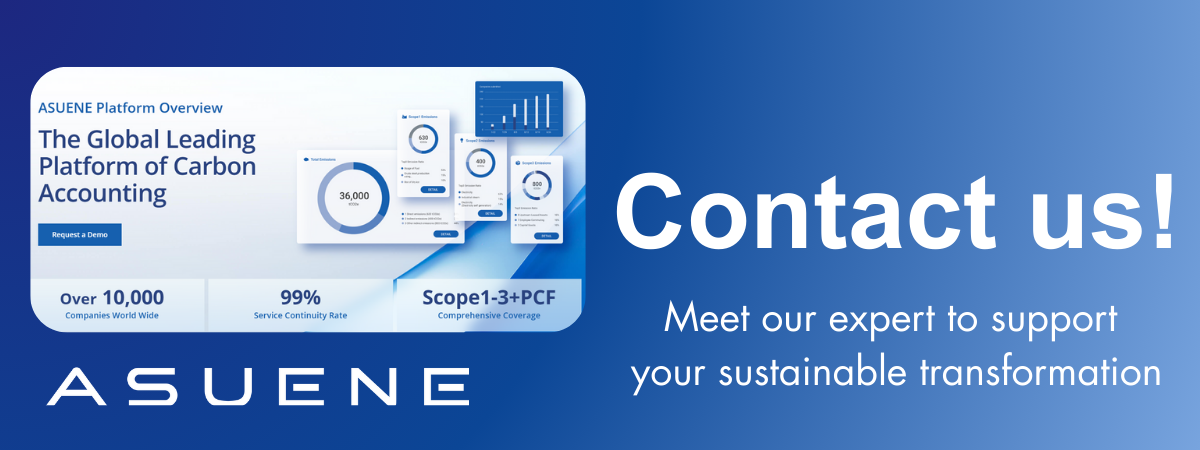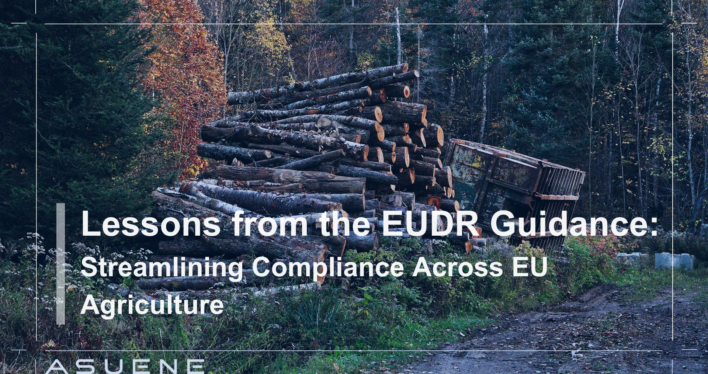- Article Summary
-
Introduction: The Release of the New EUDR Guidance
In August 2025, the European Commission released a guidance document for Regulation (EU) 2023/1115 on deforestation-free products. This long-awaited document provides clarification on key terms such as “placing on the market,” “operator,” and “negligible risk,” offering much-needed direction for agricultural businesses navigating compliance. While non-binding, the guidance plays a crucial role in harmonizing the interpretation of EUDR across Member States, reducing uncertainty and creating a clearer path for agricultural operators and traders. At its core, the document reinforces one central message: traceability is no longer optional, but essential for access to the EU market.
Who is Affected: Agriculture’s Broad Value Chain
The scope of EUDR is intentionally wide. Any business dealing with agricultural commodities such as cattle, cocoa, coffee, palm oil, soy, wood, and rubber, as well as their derivatives like leather, chocolate, or furniture, will be impacted. Importers, exporters, processors, retailers, and manufacturers must all ensure that their products entering or leaving the EU market are proven deforestation-free. This means that compliance responsibilities cascade down the supply chain, affecting not only large corporations but also smallholders and SMEs. For many, this requires significant changes to supplier engagement, contracting, and monitoring practices. Ultimately, every link in the agricultural value chain will need to demonstrate traceability back to the source.
Importantly, the regulation applies globally, not only to European forests or producers. Any company wishing to place agricultural commodities or derived products on the EU market, regardless of where they are produced, must prove they are deforestation-free. This includes exporters in Latin America, Africa, and Asia, who face the same obligations as farmers and suppliers within the EU. As a result, EUDR compliance has become a truly international requirement, reshaping agricultural supply chains worldwide.

What Compliance Really Means in Practice
At the heart of EUDR compliance is traceability. Operators must establish systems to map their supply chains, identify the origin of commodities, and verify that production did not contribute to deforestation or forest degradation. Geolocation data of production plots, supported by satellite monitoring, becomes a critical piece of evidence. Businesses must also conduct risk assessments and classify their supply chains as “negligible risk” where possible, documenting the rationale and evidence for authorities. The guidance clarifies that the legal responsibility lies with the operator placing the product on the EU market, even if they rely on suppliers or intermediaries. Compliance therefore demands not only transparency, but also strong internal due diligence processes.
Practical Compliance Checklist for Agricultural Operators
| Requirement | What It Means | Practical Action Step |
|---|---|---|
| Supply chain mapping | Identify all suppliers and production regions | Develop supplier questionnaires; use digital platforms |
| Geolocation of plots | Provide exact location of farms/production areas | Collect GPS data; integrate with satellite imagery |
| Risk assessment | Determine risk of deforestation or illegality | Use EUDR risk criteria; document outcomes |
| Documentation & reporting | Maintain records for authorities and audits | Establish compliance database; update regularly |
| Verification of negligible risk | Ensure evidence supports compliance claims | Cross-check with certification schemes and local data |
Challenges and Opportunities for the Agricultural Sector
Traceability is the single most challenging element of compliance. Fragmented supply chains, especially those involving smallholders, make it difficult to obtain reliable geolocation data and consistent documentation. High implementation costs, limited digital capacity, and data-sharing barriers further complicate the process. Yet, this challenge also opens the door to new opportunities. Digital traceability platforms, satellite monitoring tools, and blockchain-based solutions are rapidly emerging to support compliance. For businesses that invest early, these systems can deliver both regulatory assurance and enhanced market credibility. Moreover, aligning with EUDR can strengthen ESG performance, positioning agricultural companies as sustainability leaders in the eyes of investors, consumers, and regulators.
Looking Ahead: Aligning Agriculture with Deforestation-Free Goals
The Commission’s guidance underscores a new era for agriculture in Europe: one where traceability and transparency underpin both compliance and competitiveness. While the document is non-binding, it provides a practical roadmap for how businesses will be evaluated under EUDR. Looking forward, agricultural operators must prepare for integration of EUDR with broader EU policies such as the Green Deal and the Common Agricultural Policy. Businesses that embed traceability into their supply chain management will not only ensure compliance but also future-proof their operations against evolving sustainability demands. In this sense, the EUDR guidance should not be viewed solely as a compliance tool, but rather as a catalyst for transforming agriculture into a deforestation-free, sustainable sector.
Conclusion
The release of the EUDR guidance has crystallized one fundamental truth for agriculture: traceability is the cornerstone of compliance. From food and timber to derived products, businesses across the agricultural spectrum must now demonstrate that their supply chains are transparent, deforestation-free, and well-documented. While the road to compliance is complex, the guidance offers clarity and direction, making the path forward more manageable. By embracing traceability technologies, strengthening supplier engagement, and adopting robust due diligence, agricultural businesses can not only meet regulatory demands but also drive a new wave of sustainability in global food and commodity production.
Why Work with ASUENE Inc.?
Asuene is a key player in carbon accounting, offering a comprehensive platform that measures, reduces, and reports emissions. Asuene serves over 10,000 clients worldwide, providing an all-in-one solution that integrates GHG accounting, ESG supply chain management, a Carbon Credit exchange platform, and third-party verification.
ASUENE supports companies in achieving net-zero goals through advanced technology, consulting services, and an extensive network.


